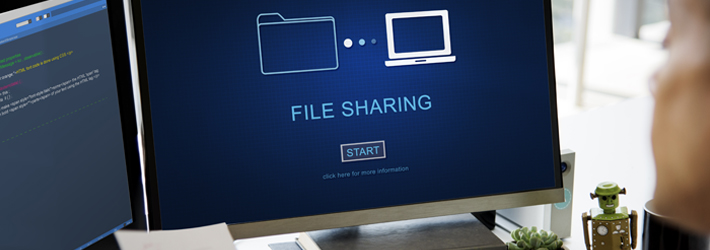
Timely sharing of information and files is critical for the efficiency of any organization. Whether small or big, remote or onsite, organizations must adopt file-sharing solutions that facilitate the smooth flow of work.
Luckily we have many file sharing solutions that are readily available. However, with the technological advancements in file sharing and distributed teams, more and more sensitive information is shared to facilitate collaboration.
It is astounding to think of the amount of data that a single organization generates and shares across the team and with other stakeholders such as clients, suppliers, regulators, independent contractors, etc.
Every time a file is shared, there is a risk of a sensitive data leak, loss of proprietary information malware infection, or even hacking. Moreover, you might be required by law to keep certain information secure.
File sharing security is a serious issue for CISOs to think about proactively.
In this article, we’ll outline the current best practices for file sharing security and how to implement each one of them in your organization to protect against the leakage or loss of sensitive data.
What are the Best Practices for File Sharing Security
Increased Awareness
As with many security issues, awareness is usually the first step. It is a low-hanging fruit that every organization should use before exploring other practices.
All users within an organization should be sensitized to adopt a security-first mindset regarding file sharing security. As we’ve seen with many breaches, laxity is one of the precipitating factors that eventually lead to a security incident.
But, many organizations hardly ever invest any time or resources to adequately train their users on file-sharing security and how to handle sensitive data. As a matter of fact, with tight deadlines and pressure to deliver, employees won’t give much thought to this unless well sensitized. They might even go ahead and share files using unapproved methods such as personal emails.
A good starting place to mitigate this is a file-sharing policy with which every user must be well conversant. Additionally, all users should know that their actions are monitored and logged. This often serves as a deterrent to any ill-intentioned user.
Invest in a Robust File Sharing Solution
As we had earlier observed, there are many readily solutions in the market today. The question is, which one gives you the best file sharing security capabilities? This is critical because, without a robust solution, every best practice we discuss in this article depends on it.
A robust file sharing solution allows seamless storage and retrieval of files, sharing, and most importantly, security of all the data.
A cloud-based solution ticks all these boxes and even offers further benefits in integration and scalability. Integration with an enterprise security system will serve as an additional layer of data security.
File Monitoring
The IT department should have visibility into all file sharing activities going on at all enterprise levels. They should actively monitor all actions to detect any unusual behavior or breaches that could lead to data loss.
For very sensitive files, logging every action done on it is a best practice since it allows for review to identify what happened and when.
In addition, they should monitor the interaction between the cloud-based file sharing solutions and other systems and apps to determine if files are unnecessarily exposed.
File Sharing Permissions
The best file sharing security practice around permissions is to grant access to only those users who need the file. This might be a challenge in a fast-paced work environment, but it is very effective with sensitive data.
Additional measures such as requiring passwords to open certain files and multi-factor authentication ensure that confidential data is only reserved for the intended users.
Enterprise-grade file sharing solutions have these types of layered access capabilities. You can even go further and limit specific actions on files such as printing, copying, or downloading.
End-to-End Encryption
When sharing files with third parties, the best practice is encrypting such files to make them unreadable to any unauthorized people. Only people with the encryption key can access the data, and their access is logged and monitored.
Critical files are most vulnerable when they get out of your organization; encryption is a bare minimum best practice if you must share such files.
When working with third parties, it is a good practice to always retain control of your files even after you’ve sent them. There is software that helps you do this by giving you visibility on what the end-user does with the file and allowing you to recall it if need be.
Use of VPNs
With working from home becoming more common during and after the pandemic, CISOs must ensure that employees aren’t exposing organizations’ data to insecure public networks. Since it’s impossible to control where a remote person may decide to work, the only way to do this is through a VPN. You can require that every user accessing organization files use a VPN to shield data from malicious people lurking behind public networks.
Periodic Security Audits
Periodic security audits of all file-sharing activity and information flow are good practices to detect any gaps that lead to data security breaches. Security audits are a risk reduction strategy that also monitors the behavior of all users to ensure compliance with internal policies and data privacy regulations.
CISOs should particularly focus on processes and areas that have experienced any breaches in the past.
Final thoughts
File sharing is now a necessity for all organizations. These files need to be shared quickly and securely to facilitate collaboration and increase productivity.
However, we can’t afford to ignore file-sharing risks that an organization is exposed to every time files are shared. It is critical that CISOs implement these file sharing security best practices and periodically audit them to ensure compliance.
If you’d like to see how the Lepide Data Security Platform can help you improve your file server security, schedule a demo with one of our engineers.



